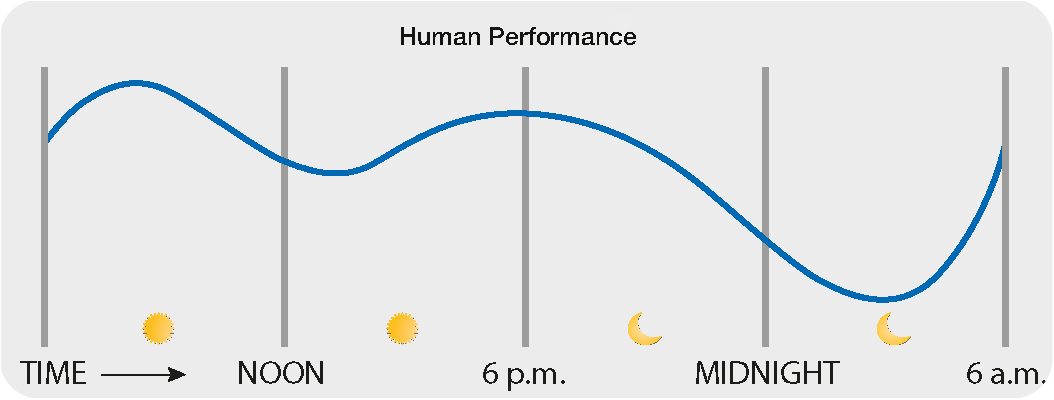Human Centric Lighting

Our modern lifestyle is out of sync with the rhythms of nature. We spend most of our time indoors, where artificial lighting virtually eliminates the difference between day and night. But in recent decades, scientific research has made it clear that light is not only for seeing, but also for managing how our bodies function, both biologically and psychologically.
The aim of Human Centric Lighting is therefore to design products that take into account not only the visual effects, but also the biological and emotional effects on people.
Biological Clock : From dawn to dusk to darkness of night, light changes send precise signals to our bodies, triggering certain psychological responses. Blood pressure, body temperature and the production of certain hormones change throughout the 24 hours. When we wake up, morning light triggers processes that stimulate attention span, which peaks in the middle hours of the day and then diminishes with the arrival of evening to prepare our body for the night's rest. This mechanism, which varies according to the seasons and individual characteristics, is essential for our body to function properly. According to research, it is important that our body receives signals such as daylight and its change during the day.
The new LED luminaires have features that allow artificial lights to mimic the quality of natural light, creating a pleasant environment where the lights can follow the natural trend of daylight, in addition to having the necessary amount of light that allows us to complete different work and study activities in the best possible way.
The Gains of Human Centric Lighting :
More Amount of Light: LED sources provide high luminous flux in line with sustainable consumption patterns while reducing energy costs.
Improved Light Quality: New sources combine high color rendering and accurate light distribution to guarantee maximum visual comfort, while anti-glare optics and low-flicker sources protect people's eyesight.
Efficient Light Control: The possibility to adjust the lights through more precise and programmable control systems can dim the lights during the day to recreate the rhythm of outdoor light, or automatically adjust according to the amount of daylight. It is also possible to choose the best amount of light for a specific type of activity, such as reading, working on the computer or a business meeting.
In Human Centric Lighting, it is essential to create a balance between natural outdoor light and artificial indoor light and to use artificial light that mimics the spectrum of natural light, such as tunable White LEDs. This is why a new generation of LED technology is used that allows to adjust color temperatures from warm light to cool light. Intermediate color temperatures are achieved by mixing two different color temperatures with light emitting LEDs and electronics at 2700K and 6500K.
The warm light of the morning and evening hours (2700-4000K) increases our sense of relaxation. The cool light of daylight (5000-6500 K) makes us feel more energized and concentrated. Work increases our concentration. It allows us to adjust the mood and ambience of a space according to our daily activities.